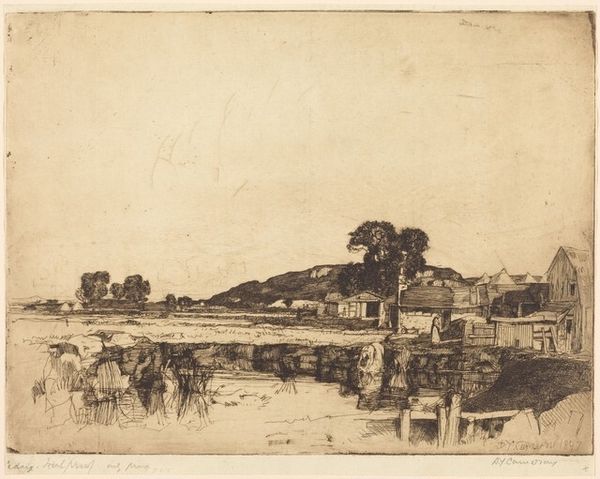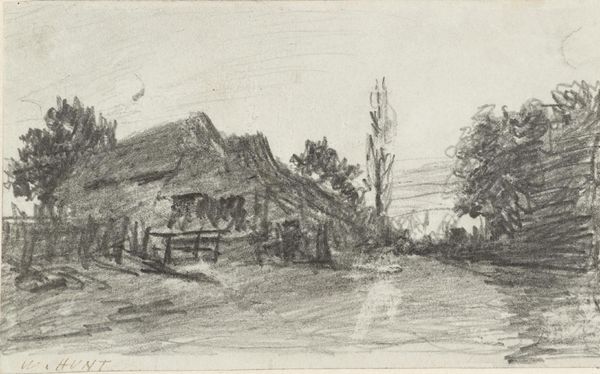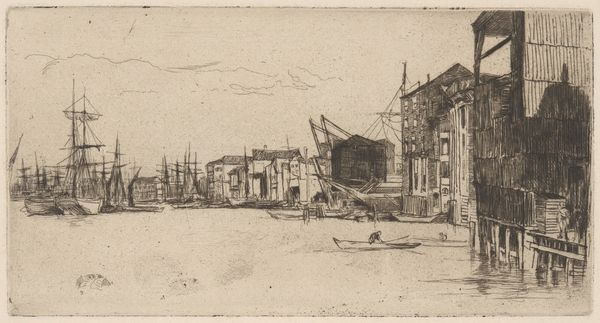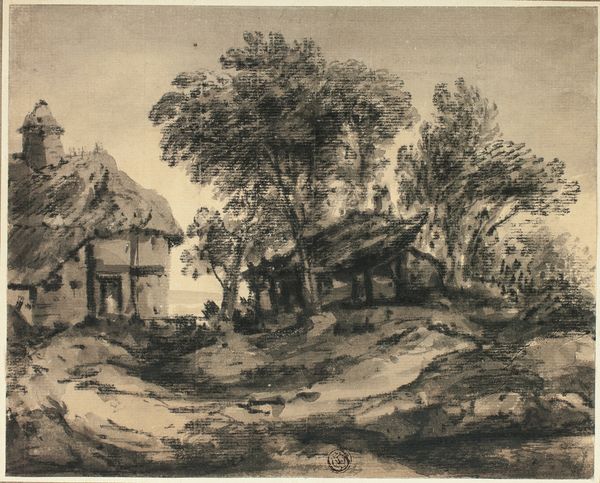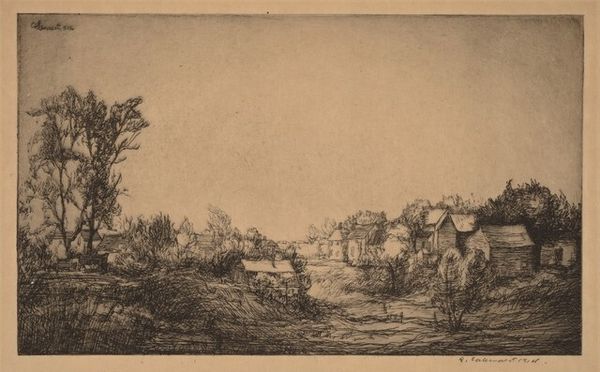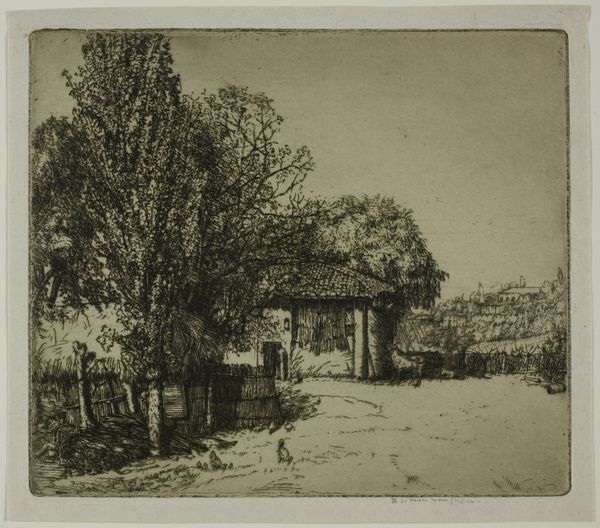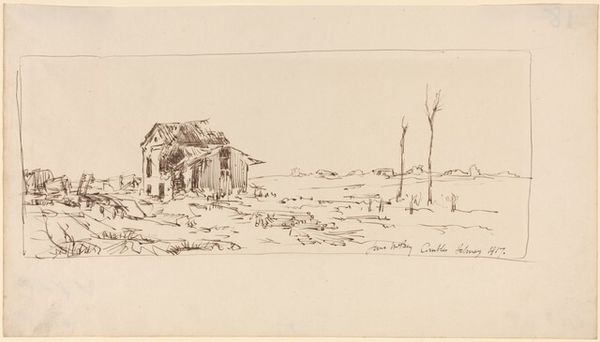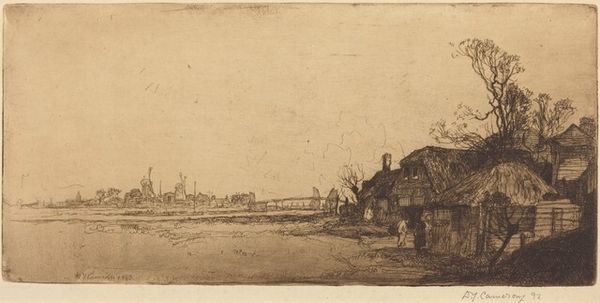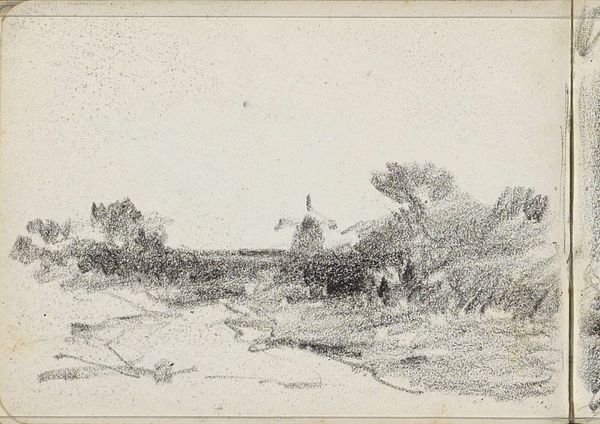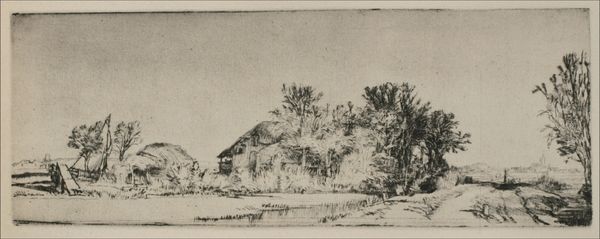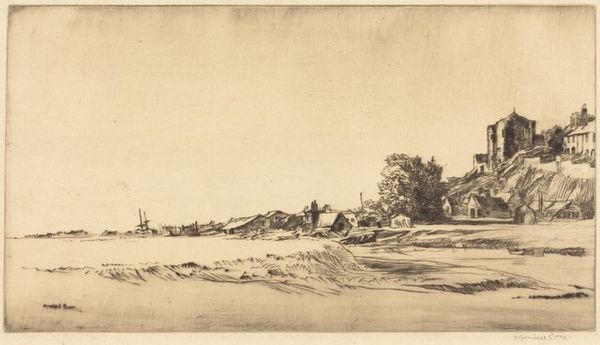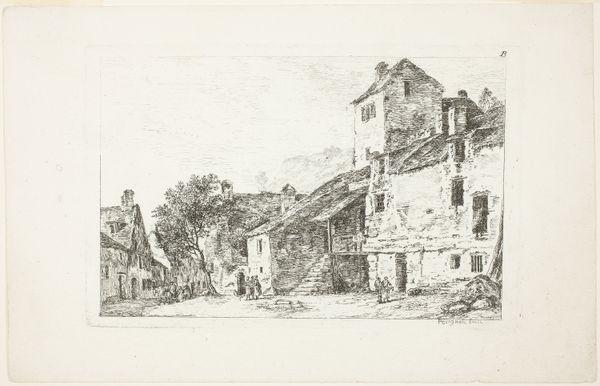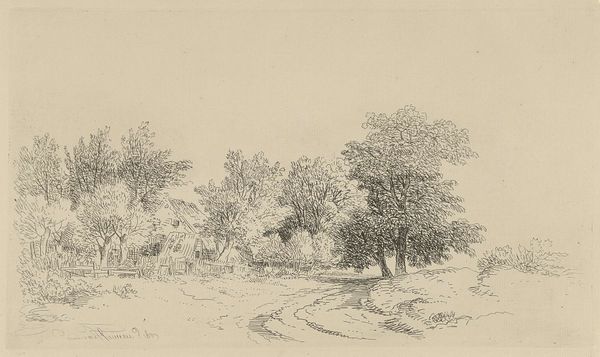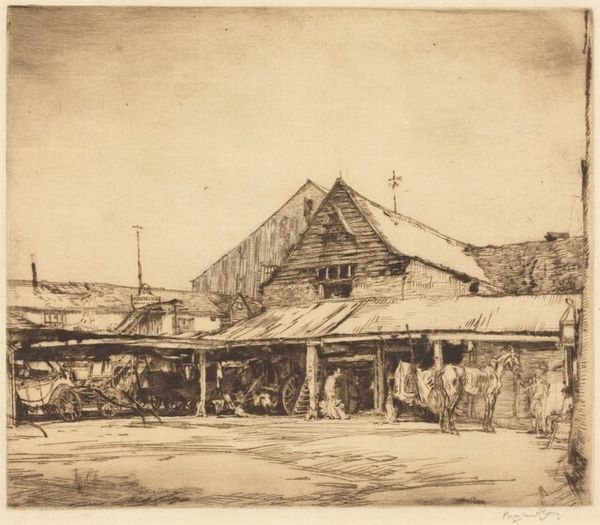
Dimensions: plate: 9.21 × 17.46 cm (3 5/8 × 6 7/8 in.)
Copyright: National Gallery of Art: CC0 1.0
Curator: Oh, there’s a strange, melancholy beauty to this. Almost ghostly, wouldn’t you say? Editor: Yes, it's haunting. This is Muirhead Bone's "Cambridge Midsummer Fair" from 1904. An etching, using drypoint, and pencil, primarily. A scene caught in a delicate web of lines. Curator: Right. You see those figures in the foreground? They almost blend with the landscape, as if they’re part of the transience of the fair itself. And that central caravan, draped and leaning, speaks to me of lives lived on the move, a temporary shelter. What do you make of the central caravan? Editor: I agree. Structurally, it is clearly made of wood and canvas. Materials readily available and relatively easy to assemble. Consider how crucial those particular materials are to making a temporary and mobile living structure like that caravan. They dictated the aesthetic and possibilities. Also, note all of the logs sitting around on the bottom; this whole scene speaks of material being assembled and transported. Curator: Yes! It's functional poetry, isn’t it? Bone's impressionistic style, especially in the tree on the left, hints at something more profound than a mere snapshot. It’s a feeling, a breath of time caught on paper. He’s playing with our memory, really. That haziness asks us to fill in the blanks. Editor: Absolutely. I am thinking of how each stroke, each etching line was created, demanding both artistry and technical skill. His attention to detail is so striking, how Bone represents the contrast between the rickety wagon against the imposing structure to the left. You see how the wood ages in tone and breaks apart? He isn’t romanticizing it at all. Curator: Definitely. You can almost smell the dust and hear the distant music, can't you? The fair seems to be receding into its own dream. And the sky looks heavy... almost expectant. It's like the whole scene is holding its breath. Editor: And so many material possibilities in the everyday! From raw lumber to tent canvases to horse carts for mobile living, the print reflects social context too—a time when fairs were not just entertainment, but economic and social hubs for many. Curator: Beautifully put. You know, this etching makes me realize how little has changed. The essence of the fair remains, doesn’t it? A human need for fleeting community, a celebration before everything disperses again. Editor: True. Bone captured a world in transition through material—the social and the technical aspects—of a fair in its time. Something profound emerges from a combination of the materials and composition itself.
Comments
No comments
Be the first to comment and join the conversation on the ultimate creative platform.
